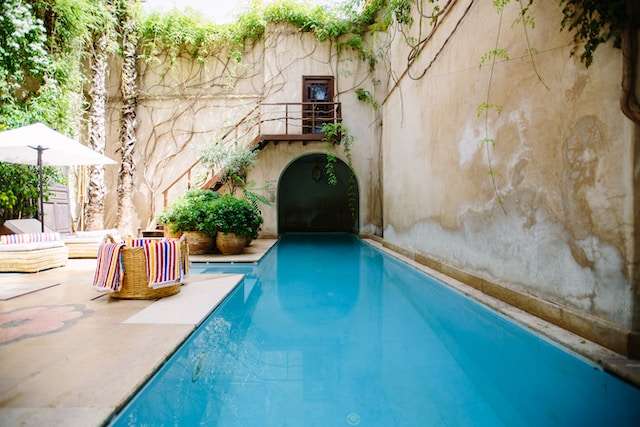Swimming pools provide a refreshing escape from the scorching summer heat. However, with time, even the sturdiest pools may deteriorate due to wear and tear. Renovating an old swimming pool can bring back its charm and functionality. A pool renovation project can be a significant investment, and it’s essential to do it right. Here are some tips to have in mind when renovating an old swimming pool.
Assess the pool’s condition
Before beginning the renovation process, you must inspect the pool’s current condition. An assessment will help you identify any structural damage, leaks, or other issues that may impact the pool’s longevity. You can hire a professional pool inspector to examine the pool and recommend the best course of action. If the swimming pool requires major repairs, it may be more cost-effective to replace it entirely rather than renovate it. In such a case, consider upgrading to a more energy-efficient pool design.
Choose the right pool finish
Pool finishes can significantly affect the pool’s appearance, durability, and maintenance. There are various pool finish options available, including plaster, tiles, and aggregates. Plaster is the most common pool finish and comes in different colours and textures. It’s also the most affordable option, but it’s prone to staining and requires frequent maintenance. Tiles are a durable and aesthetic option but can be expensive to install. Aggregate finishes are a blend of crushed stones and pebbles that provide a natural look and can last for years with minimal maintenance.
Improve pool safety
Improving pool safety is of paramount importance when renovating an old swimming pool. There are several measures you can take to ensure a safe swimming environment. Installing a pool cover is an effective way to prevent accidental drownings and keep the pool area secure when it’s not in use. Pool covers not only act as a physical barrier but also help reduce water evaporation and chemical usage. Another crucial safety feature is proper fencing around the pool area. A sturdy fence with a self-latching gate can prevent unauthorized access, especially by young children or pets. Considering a pool alarm system can provide an extra layer of protection as well. These alarms can alert you when someone enters the pool area, helping you stay vigilant and respond promptly to any potential dangers.
Invest in a new electrical pump
Investing in a new electrical pump is a wise decision when renovating an old swimming pool. Upgrading your pool’s pump can offer several benefits, including improved energy efficiency and reduced maintenance costs. Newer electrical pumps are designed to be more energy-efficient, helping you save on electricity bills in the long run. They utilize advanced technologies that optimize water flow while consuming less power. A new pump can enhance the overall functionality of your pool. It can provide better circulation, filtration, and water clarity, leading to a healthy and clean swimming pool. Plus, modern electrical pumps often come with programmable features and timers, allowing you to automate the pool’s filtration system and optimize its operation.
Add extra pool lighting
Adding extra pool lighting is a fantastic way to enhance the ambience and functionality of an old swimming pool during renovation. Well-placed lighting fixtures can create a captivating and inviting atmosphere, allowing you to enjoy the pool even during the evening or nighttime hours. LED lights are a popular choice for pool lighting due to their energy efficiency, long lifespan, and versatility. They can be installed underwater, along the pool perimeter, or even in water features like fountains or waterfalls. LED lights come in various colours and can be programmed to create different lighting effects, such as soft and soothing or vibrant and dynamic.
Plan for maintenance
Planning for maintenance is a crucial aspect to consider when renovating an old swimming pool. After you complete the extensive pool renovations, it’s important to establish a regular maintenance routine to keep the pool in optimal condition. This includes tasks such as cleaning, chemical balancing, and equipment checks. Regularly skimming the pool surface, vacuuming the pool floor, and brushing the walls will help keep the pool clean and free from debris. Maintaining proper chemical balance is essential to ensure the water is safe and hygienic for swimmers. This involves regularly testing and adjusting the pH, chlorine, and other chemical levels. Scheduling professional pool maintenance at least once a year is highly recommended. A professional can inspect the pool equipment, identify any potential issues, and perform necessary repairs or maintenance.
Consider some recreational features
Renovating an old swimming pool provides an opportunity to add new recreational features. Consider adding features like waterfalls, water slides, or a hot tub to enhance the pool’s ambience and functionality. Waterfalls and fountains can add a serene and relaxing ambience to the pool area, while water slides are exciting for both kids and adults. A hot tub can provide a cozy and intimate spot for relaxation and conversation within the pool.
Conclusion
Renovating an old swimming pool is an exciting project that can breathe new life into your outdoor space. By following the tips mentioned above, you can ensure a successful pool renovation. Taking the time to evaluate the pool’s condition, making informed decisions about finishes and equipment, prioritizing safety, and planning for regular maintenance will contribute to a pool that is not only visually appealing but also functional, efficient, and safe. A well-renovated swimming pool will provide countless hours of enjoyment and relaxation for quite a long time.

As the editor of the blog, She curate insightful content that sparks curiosity and fosters learning. With a passion for storytelling and a keen eye for detail, she strive to bring diverse perspectives and engaging narratives to readers, ensuring every piece informs, inspires, and enriches.









